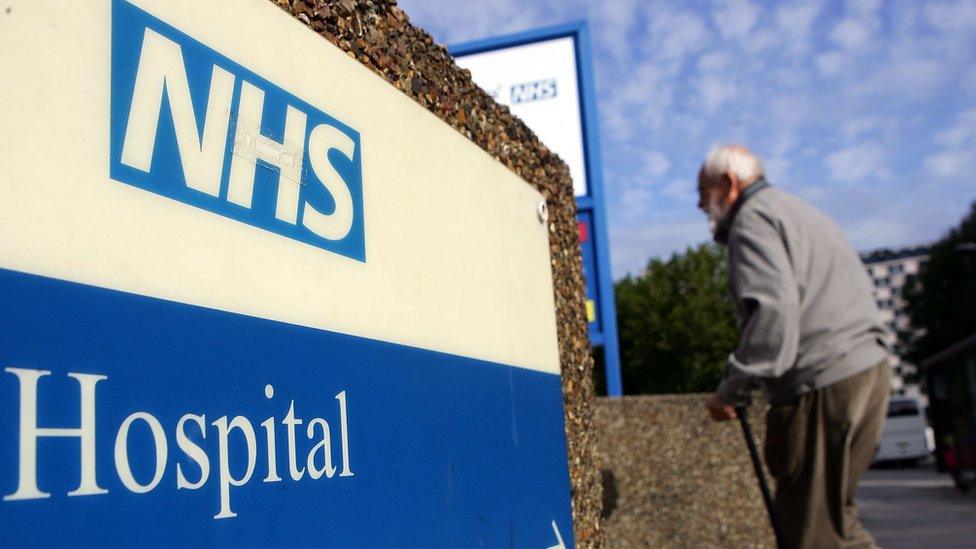Coronavirus: Why has Leicester had a spike of coronavirus?
- Published
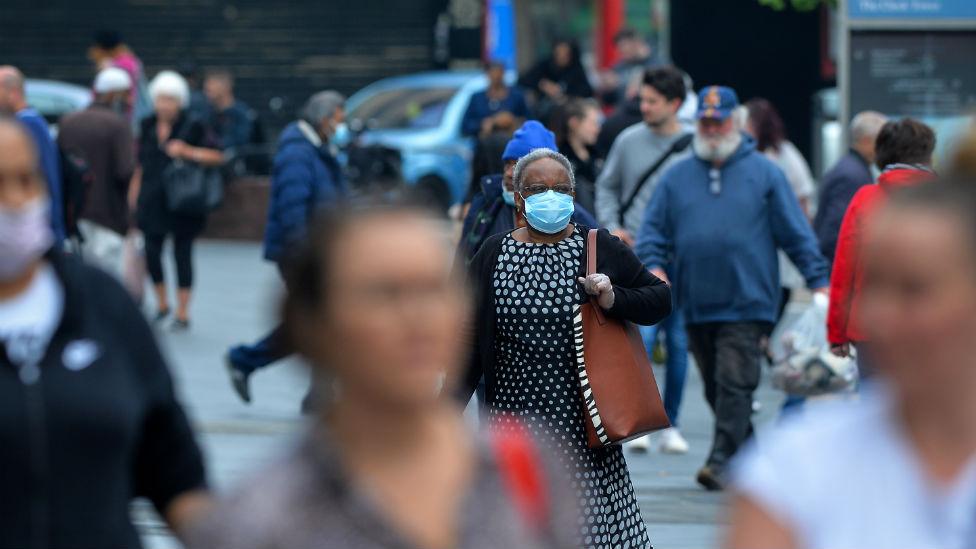
Leicester has become the first part of the UK to experience a local lockdown.
While the rest of the country is seeing restrictions easing, the city has gone into reverse. Shops are shutting and schools will follow suit on Thursday.
How did this happen? And what does it tell us about how well the virus is under control in the UK?
What's the cause of the outbreak?
The first major public sign that there was a growing problem with coronavirus in Leicester was on Monday 8 June.
In the east of the city, Humberstone Academy, which runs an infant and junior school, closed its doors with the head teacher explaining it was linked to positive tests for coronavirus. They briefly re-opened the following day, before being closed again.
The schools have not reopened since. Over the next two weeks, over 900 confirmed cases were recorded - one in 16 of all the positive tests seen in the UK.
So what has caused this? In short, the virus still being present and not enough social distancing.
Some have pointed to the Black Lives Matter protest - Leicester saw hundreds of people take to the streets in early June.
Clearly mass gatherings are not helpful in containing the spread of the virus, but many people wore masks, it was outside and some appeared to try to keep a little distance between themselves and others where possible.
It is also worth pointing out there were plenty of these marches in other cities that have not seen a spike.
Instead, health officials on the ground believe there are likely to have been many factors which contributed to the spread in Leicester.
The east of the city appears to be the epicentre of this local outbreak - although cases are now being seen in other parts of the city.
The area includes streets with tightly packed terraced housing, and has a high proportion of ethnic minority families where multi-generational living is more common.
Indeed, Leicester as a whole is one of the most culturally diverse areas in the country, with about half of its residents from ethnic minority groups.
Density of population is bound to be factor, but other issues are at play too. There seems to be signs of transmission in workplaces, suggesting social distancing guidelines are not been adhered to as well as they should, and also transient workers passing through.
In short, there is nothing necessarily unique to Leicester that could be pointed to a single stand-out cause as restrictions have eased.
But it is certainly on quite different scale to other local flare-ups that have happened so far.
One in Weston-super-Mare was largely contained to the hospital, while another in Cleckheaton, which was linked to a meat-packing factory, does not seem to have spread across the community.
Should action have been taken sooner?
This is a key question - and one that is already being asked. Even at this early stage, it is clear to see the signs have been there for a few weeks at least.
Over the weekend the city's Mayor, Sir Peter Soulsby, was saying the authorities there had only received limited data from the government and national testing system.
This goes to the heart of what many fear is a weakness in the system in England - the way the national test and trace system connects up with local teams.
The system, which got up and running at the end of May, relies on a national team of 25,000 call handlers to triage cases that test positive.
Complex cases involving schools, care homes and prisons, for example, are automatically transferred down to local public health teams, involving councils and Public Health England.
But individuals are dealt with by the national team. They ask for information from them about their close contacts and ask them to isolate.
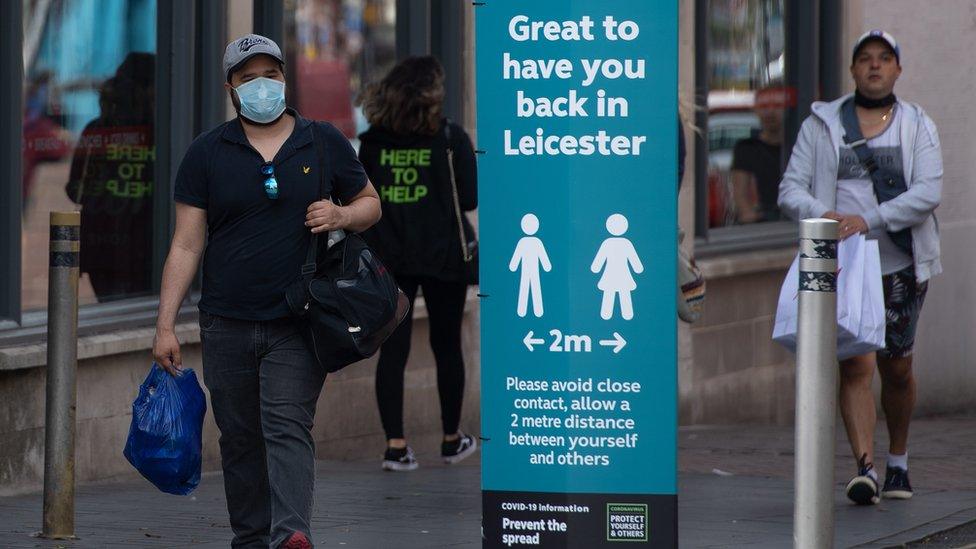
Health Secretary Matt Hancock first mentioned an "outbreak" in Leicester on 18 June
Comprehensive information about these cases has not passed down to councils - or at least not in the detail they would like. It's like "having one arm held behind your back in a fight" was how one director of public health described it to me, adding: "You are up against it from the start." Essentially it means they cannot monitor all local cases to see what patterns are emerging.
That now is beginning to change - a data-sharing agreement has been signed with councils and Public Health England has set up a system to share information.
Another weakness of the system appears to be a lack of translation services. Baroness Dido Harding, the head of test and trace, has said this is being invested in.
But it is noticeable that the government has said the city and county councils will be given funding to invest in communication in different languages, suggesting the lack of translation support may have had an effect on the way the local population has engaged with requests to isolate and social distance.
Could this be the first local lockdown of many?
The prospect of local lockdowns has always been on the cards. While the number of infections being reported has been falling even as restrictions have been easing over the past six weeks or so, there is still a fairly significant amount of the virus in circulation.
About 1,000 positive tests a day are being reported across the UK, although the true number is bound to be higher, as the government's surveillance programme - run by the Office for National Statistics - is suggesting there are many more cases in circulation.
One of the biggest problems with this virus - and why it has wreaked such havoc - is that it is very infectious, and can be spread before symptoms develop or by people who do not know they have it because they are not showing symptoms.
These silent spreaders mean it is difficult to contain the virus - unlike say Sars, another coronavirus which circulated in 2002-03. People were only infectious when they were displaying symptoms, so once they were isolated the virus could be stopped in its tracks.
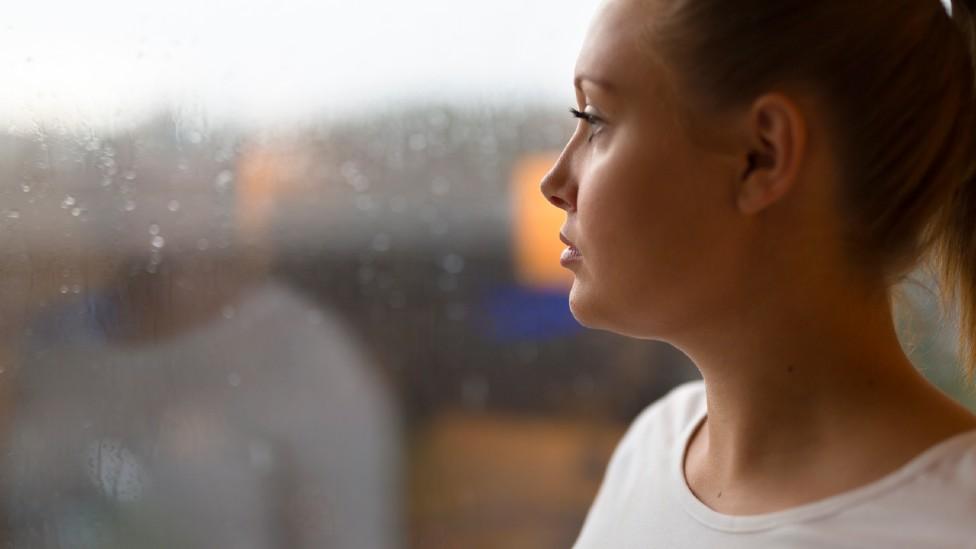
It means it is very difficult for countries with such large populations spread across a number of densely packed cities to eliminate the virus as, say, New Zealand has.
That's not to say the UK has not made mistakes - you just need to compare the high level of cases and deaths we have seen compared with Germany to see that.
But even Germany has introduced local lockdowns - and experts such as Dr Bharat Pankhania, a former consultant in communicable disease control at Public Health England, are already predicting other cities will follow suit in the coming months.
Unfortunately these are, it seems, going to become a way of life from now on.
Follow Nick on Twitter, external
- Published16 April 2020

- Published29 April 2020
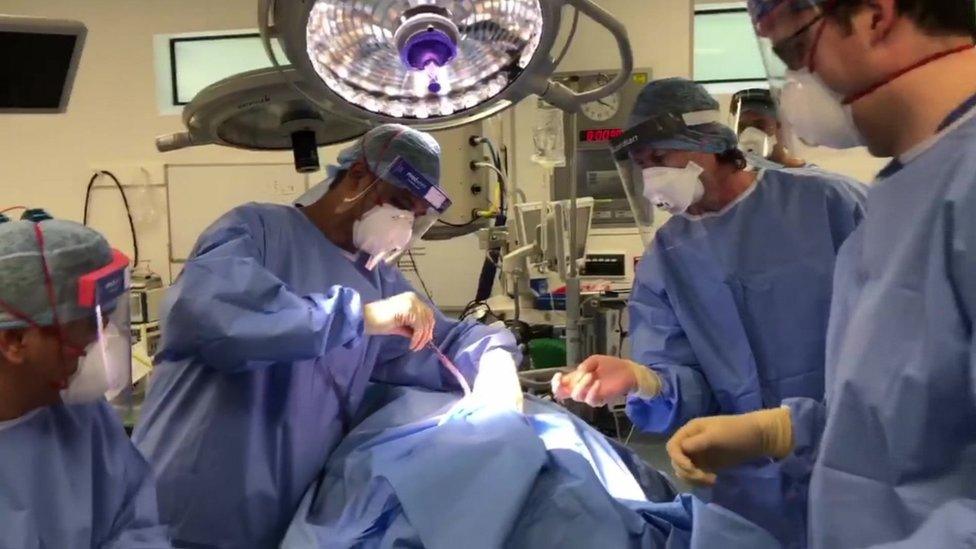
- Published30 March 2020
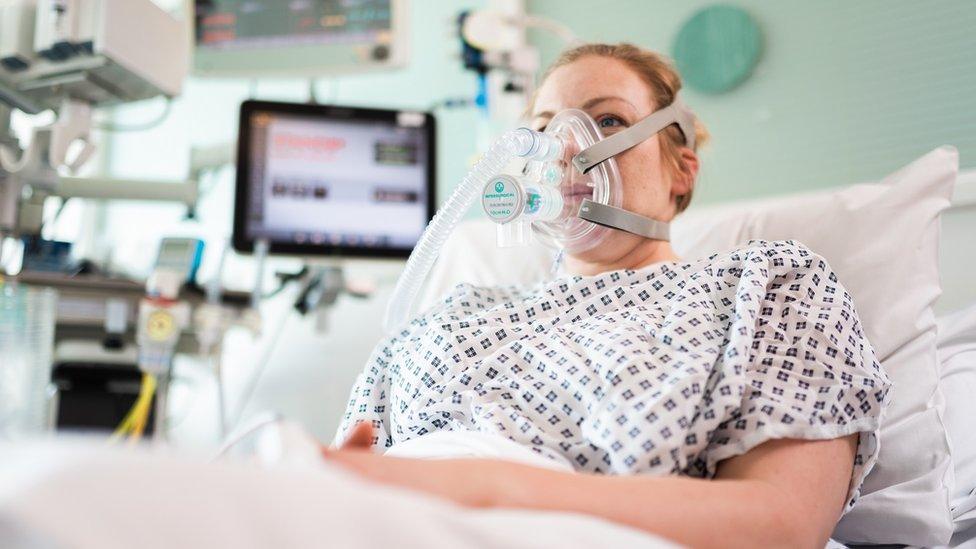
- Published4 August 2019

- Published6 January 2019

- Published8 February 2017
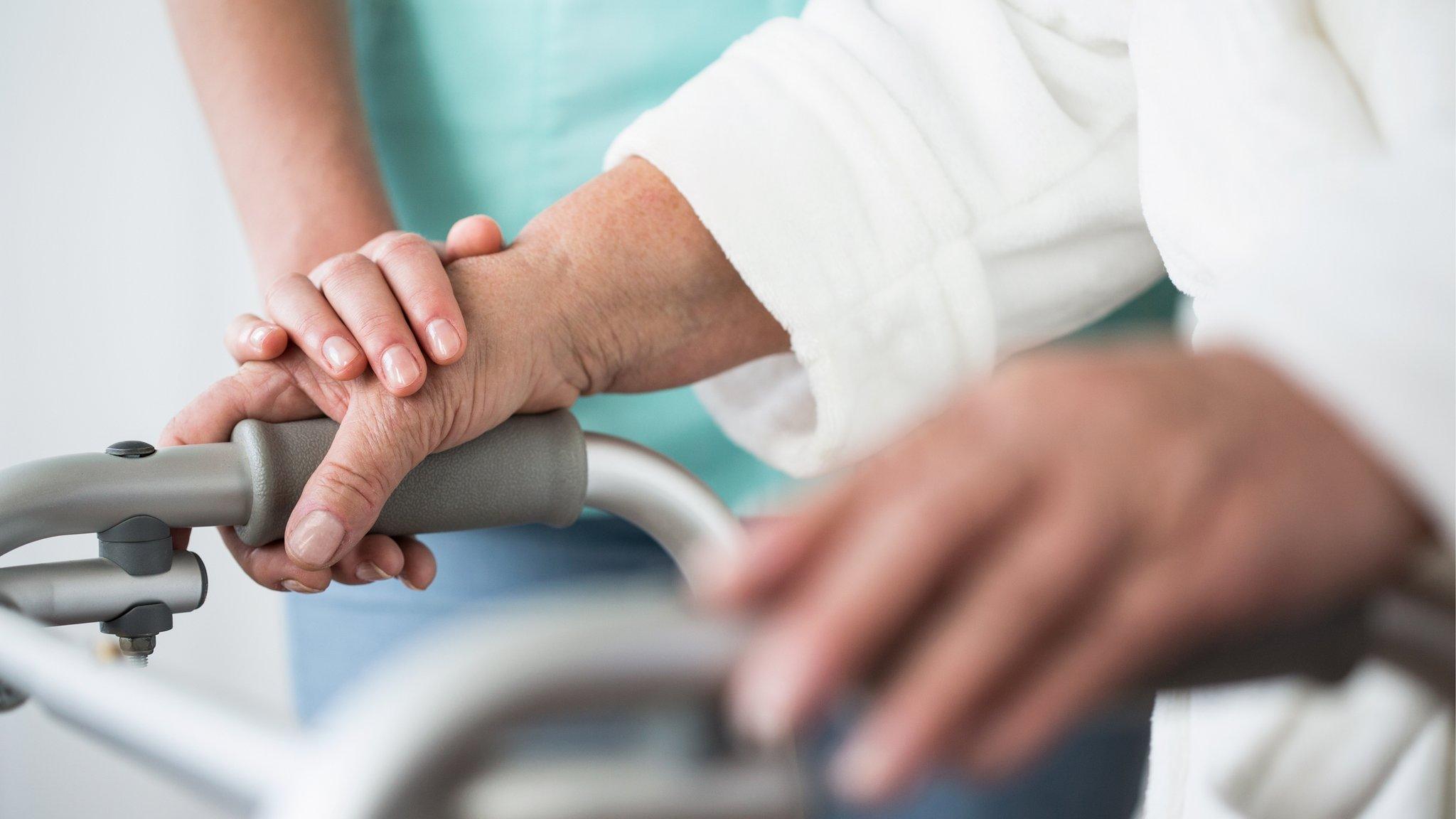
- Published8 February 2017

- Published6 January 2017
